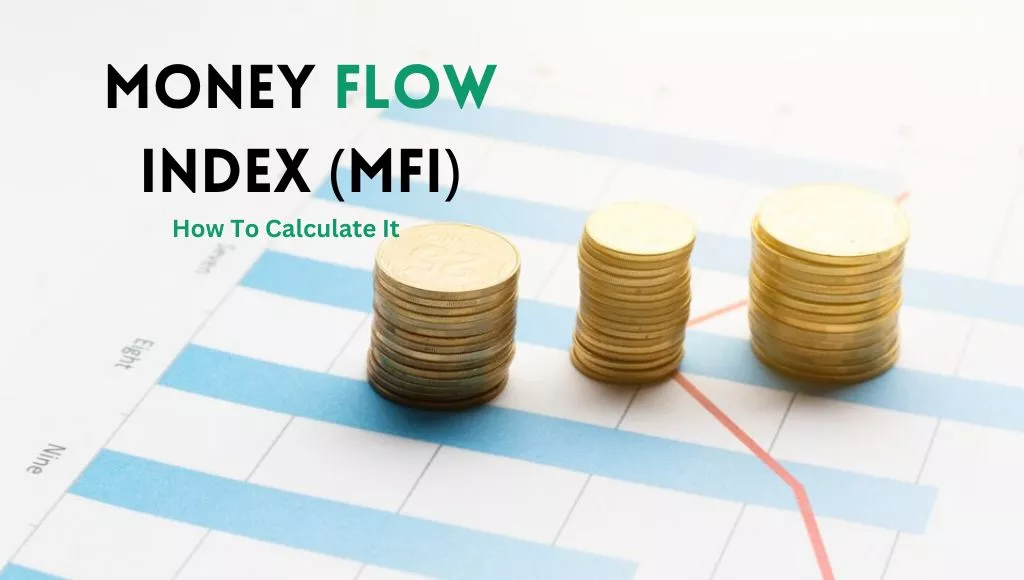Money Flow Index (MFI) is a technical indicator used by traders to literally “follow the money” in the crypto market. The oscillator measures the flow of money in and out of a cryptocurrency over a specified period of time.
It is related to the Relative Strength Index (RSI) but incorporates both price and volume data of the asset.
In this article, we will be exploring what MFI is, how to read the oscillator, how it is calculated, and how to trade the signals delivered by the indicator.
So, let’s get started.
What Is The Money Flow Index (MFI)?
MFI is a momentum oscillator that uses a given crypto asset’s price and volume data to identify its overbought and oversold signals. By looking at the indicator, traders can determine whether the underlying asset is experiencing a buying or selling pressure.

The oscillator which moves between 0 and 100 is related to the RSI but incorporates volume, whereas the Relative Strength Index only considers the price of an asset. To simplify, MFI is RSI with volume measurement integrated.
Traders can also use the MFI to watch out for divergences in the price of a crypto, which may signal possible trend reversals.
Related Readings: Price Prediction For Bitcoin, Ethereum, and Ripple
How To Read The Money Flow Index (MFI)?
The oscillator with ranges between 0 and 100 is primarily used to determine the overbought and oversold levels of a crypto asset. Experts recommend 10 and 90 as indicators of oversold and overbought levels, but prices hardly reach those marks.
A cryptocurrency is considered to be oversold when the MFI reading drops below 20, while a reading above 80 would imply oversold conditions. These levels may change depending on market conditions.
MFI followers closely watch the centreline, which is at 50. A reading above 50 indicates that there buying pressure in the market, while a reading below the centreline denotes selling pressure for the cryptocurrency.
Formulas For Calculating Money Flow Index (MFI)?
There are four methods by which you can calculate a crypto asset’s MFI. They are as follows:
Determine The Typical Price (TP) Of The Relevant Time Period
TP = (HIGH + LOW + CLOSE) / 3
Determine The Money Flow (MF)
MF = TP * VOLUME
When the current Typical Price of a token is larger than the preceding TP, then its money flow is considered to be positive. A positive MF implies that investors are building up their positions on the underlying asset.
Whereas, if the current TP of the crypto dropped from its previous TP, then the MF is determined as negative. A negative money flow implies that investors are preparing to exit their positions in the asset.
Determine The Money Ratio (MR)
MR = Positive Money Flow (PMF) / Negative Money Flow (NMF)
Calculate The Money Flow Index (MFI)
MFI = 100 – (100 / (1 + MR))
The default time for calculating MFI is 14, with a maximum fixed time of 100 and a fixed minimum being 0. That means the MFI value of a crypto will oscillate between 0 and 100.
Related Readings: Top 10 Emerging Technologies To Keep An Eye On As We Enter 2024
How To Calculate Money Flow Index (MFI)?
Given below are the steps that you will need to follow to calculate the Money Flow Index of a cryptocurrency:
- Calculate the token’s typical price (TP) for each of the last 14 periods
- Mark each period for whether their TP was higher or lower than the previous period. This is to indicate if the money flow (MF) is positive or negative
- Calculate the MF by multiplying the TP by the volume for that particular period. Use negative or positive numbers depending on whether the period was up or down
- Calculate the MF ratio by adding all the positive MF over the last 14 periods and dividing it by the negative MF for the same period
- Calculate the MFI using the MF ratio
How To Trade Using Signals Provided By The Money Flow Index (MFI)?
1. Overbought and Oversold Conditions
As previously mentioned, an MFI reading above 80 indicates overbought conditions, and a reading below 20 implies oversold conditions in the market.
When a cryptocurrency is in an overbought position, traders intend to take the opportunity to place sell orders in anticipation of a trend reversal. And when the asset’s prices are in oversold conditions, the idea is to place buy orders.
2. Divergences
Divergences occur when the crypto’s price moves in the opposite direction of the MFI.
A bullish divergence is signified when the price is edging lower but the MFI values are surging. This indicates that selling pressure is reducing in the market and buyers are ready to take over. Bullish divergence is an opportunity to purchase the underlying crypto at a cheaper price.
On the other hand, a bearish divergence occurs when the crypto’s price surges but MFI values go lower. This signal indicates that the buying pressure for the asset is diminishing in the market and sellers are prepared to take charge. A bearish divergence provides a potential opportunity for sellers to cash out their holdings at a high price by placing a short sale order.
3. Trend Pullbacks
The trick to performing well in a trending market is to always join the prevalent trend when the underlying asset’s price makes a retracement. This is where MFI comes in handy.
Whenever there is an uptrend in the market and the MFI drops to below 20 only to get back above this level, it signals the end of the retracement. This means the crypto’s price is ready to resume the bullish momentum.
Likewise, when the market is down-trending and MFI surges above 80 followed by a drop below this level, it is an indication that retracement is over and the cryptocurrency’s price is ready to continue with a bearish momentum.
